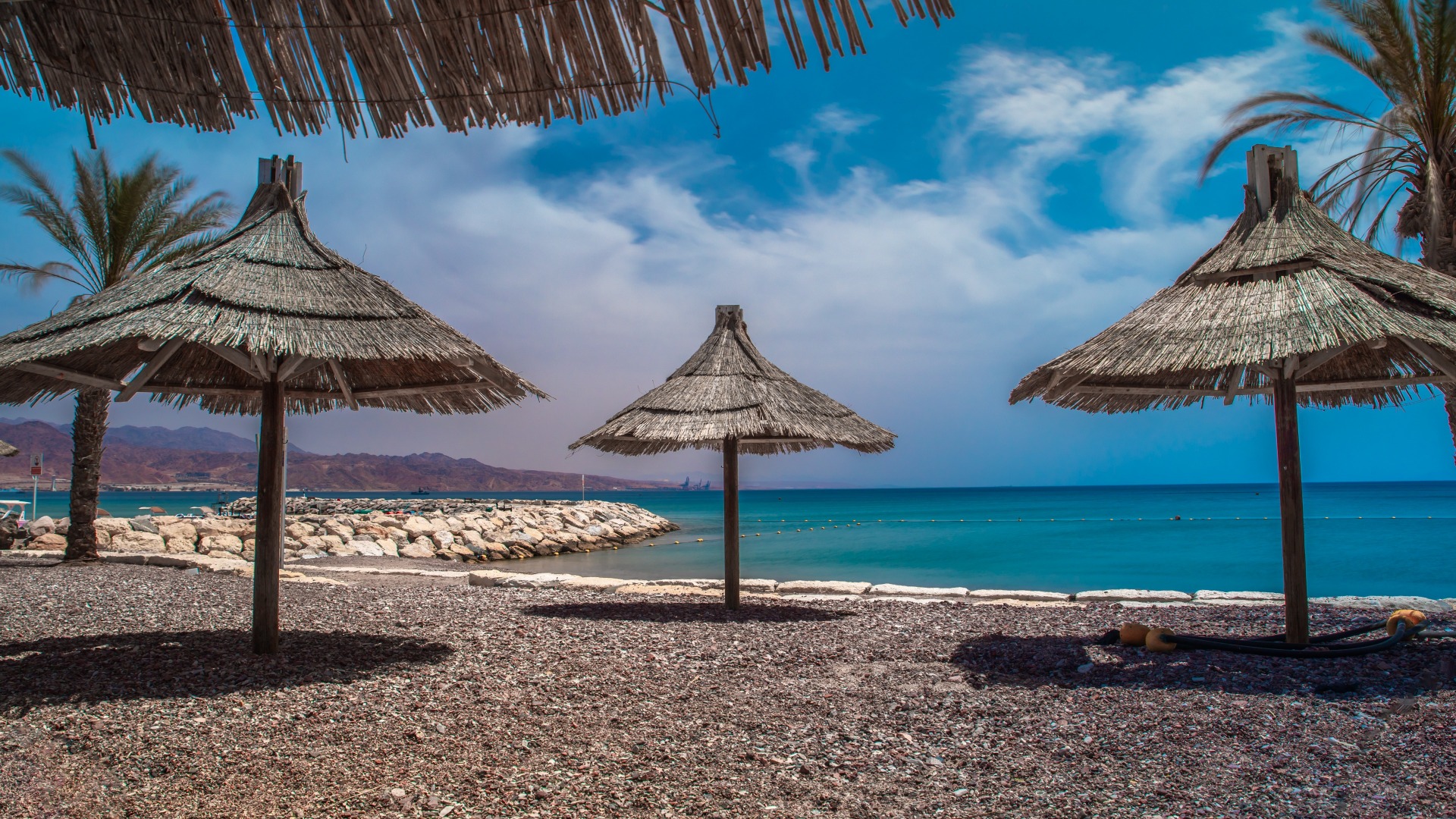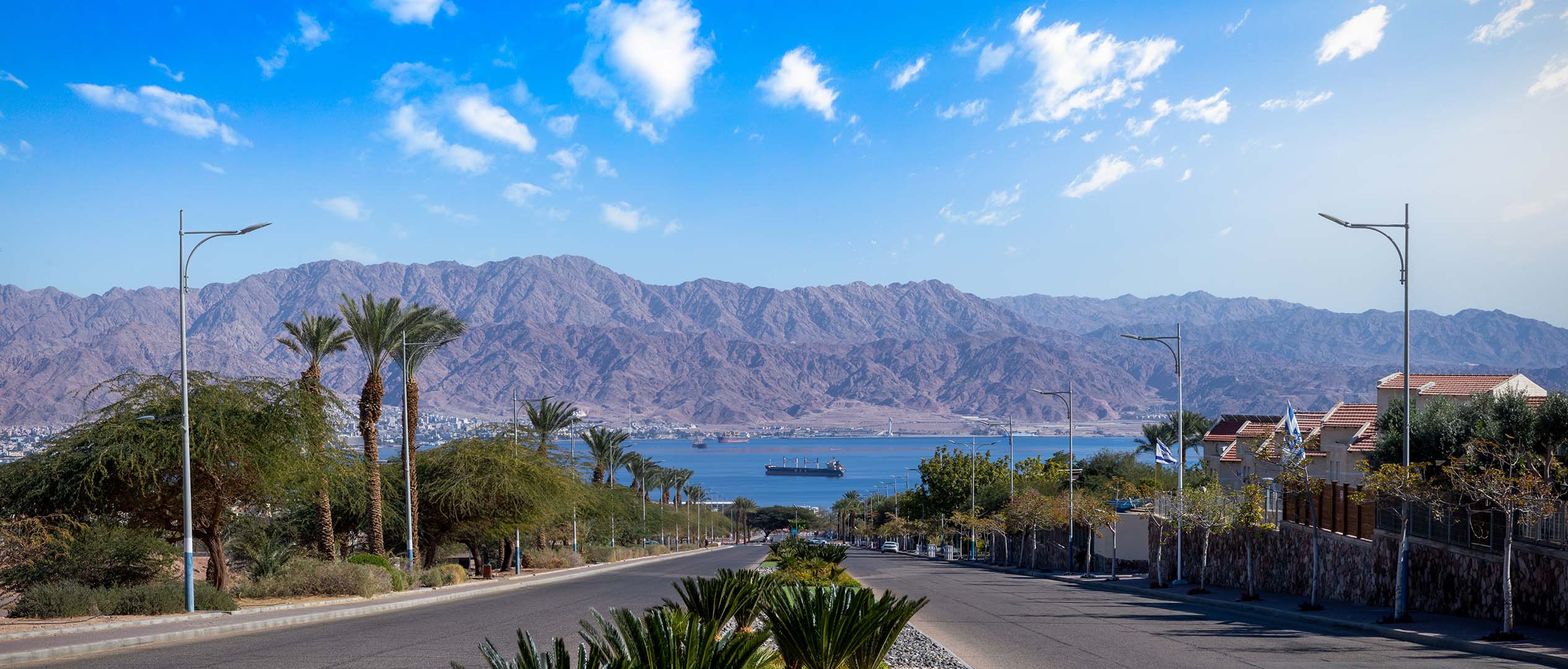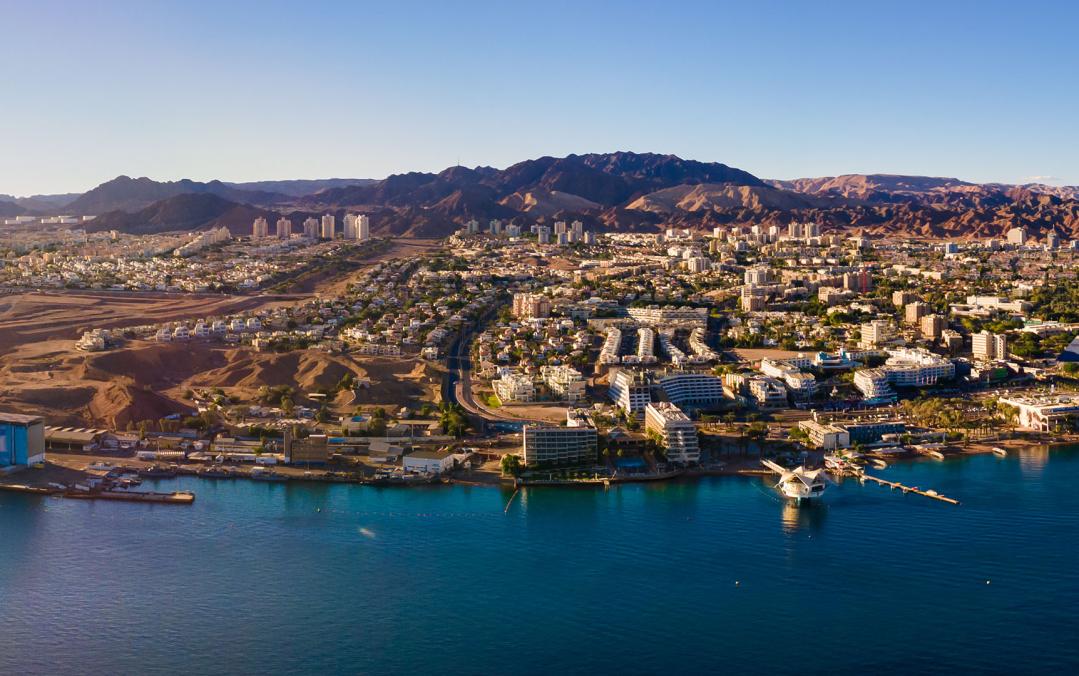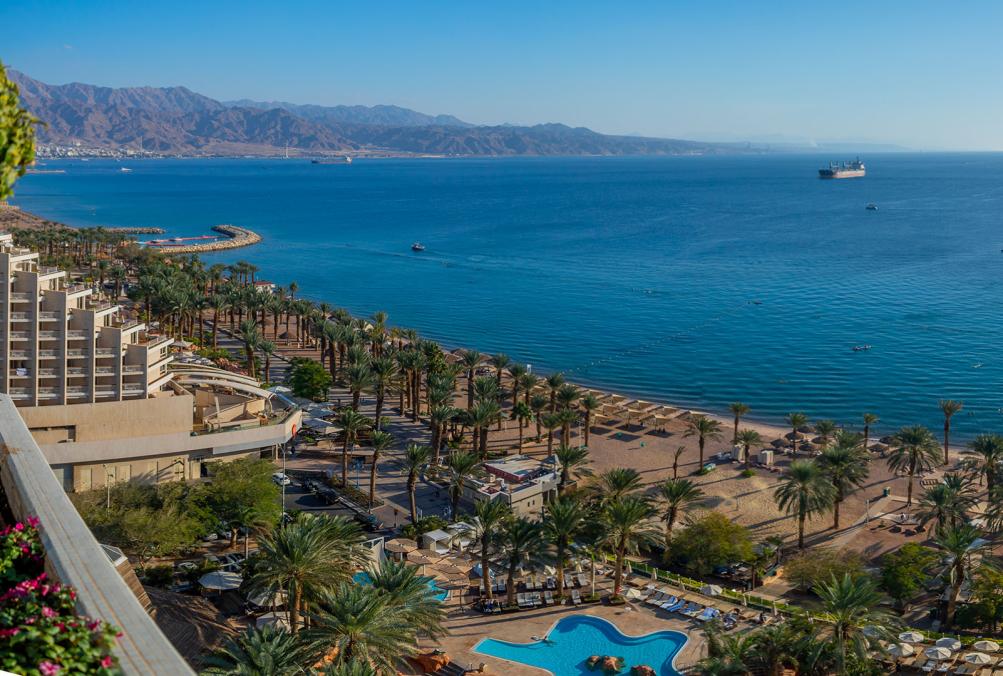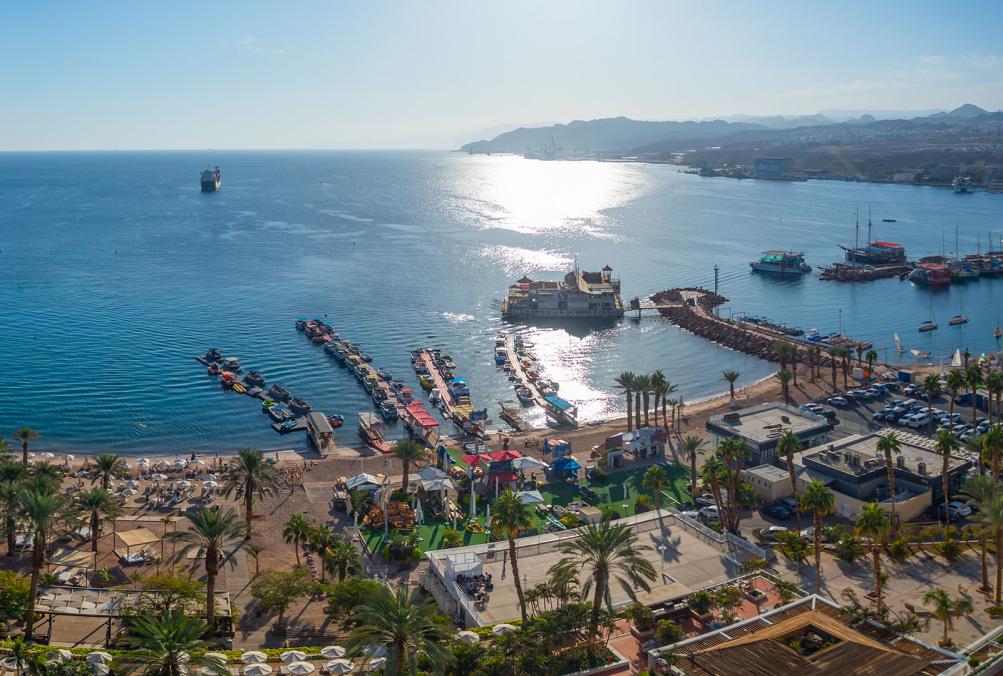Welcome to eilat
WELCOME TO EILAT - THE CITY THAT WILL HOST THE WORLD ESPORTS CHAMPIONSHIP
Eilat is Israel's southernmost city and the country's only outpost on the shores of the Red Sea, which it shares with three other nations: Jordan and Egypt, which both have a land
border with the city, and Saudi Arabia, whose shores are visible from the mountains around Eilat and its southernmost beaches. As the country's vacation city par excellence, many
Israelis insist on visiting Eilat at least once a year or, at the very least, going through it en route to neighboring destinations, when they incorporate an overnight there with a
vacation in Sinai or a trip to Jordan.
Eilat offers a wealth of options, attractions, and activities, and is suitable for several types of vacations. The Red Sea is, of course, the main draw, as Eilat boasts the most
beautiful beaches in Israel. Many of them offer a range of extreme water sports, such as water-skiing, SUP (stand-up paddleboarding), swimming, and kite-surfing. Under the surface
of the sea hides a rich kingdom it's easy to fall in love with – colorful, fascinating fish, corals, and other living creatures. Eilat, home to the northernmost coral reef in the
world, offers snorkeling and scuba diving options for everyone, from rank beginners to advanced adventurers. No wonder it attracts visitors from all over the world who come
expressly to dip in the waters of the Red Sea.
The weather in Eilat is sunny and summery even in winter. In the hot summer months when temperatures push the mercury high, the city is best suited for relaxation, while in winter
the temperatures are much more pleasant than elsewhere in Israel. In the winter, Eilat is the place to go for anyone who wants to get away from the cold and the rain and enjoy the
sun and lovely warmth. It doesn't matter when or why you come to the city – a family vacation, a romantic weekend, a shopping spree, fun with friends, or just to relax on the beach
– you can be sure to find what you're looking for in Eilat, Israel's vacation capital.
Gallery
PICTURES FROM THE HOST CITY - EILAT. PLACES OF ENTERTAINMENT, RESTAURANTS AND MORE
What do do?
TAKE ADVANTAGE OF YOUR TIME IN EILAT: PLACES OF ENTERTAINMENT, RESTAURANTS AND MORE
Where would you like to spend your time?Most of the restaurants and fast-food outlets are located on the promenade, in the tourist center (Derekh Yotam), and at the shopping centers and malls. There are also some classical establishments in the industrial zone at the city's entrance suitable for a night of drinks and good food. Those choosing to eat at the hotel or vacation rental can take advantage of the many places offering deliveries, whether by the restaurants' services or by dedicated delivery companies. Those who keep kosher need not feel left out, as there are plenty of kosher eateries in the city.
Even the beaches have excellent restaurants. Most of them offer extensive menus with large beach servings, such as fish platters, appetizers, salads of all kinds, and desserts. At most beaches, you can order and drink alcohol of all kinds, and breakfast menus can be enjoyed for a good part of the morning. Some of the beaches, such as Mosh's, serve vegan and vegetarian fare.
In the evening and at night, the bars in town serve a nighttime menu of mostly fried items to go with the alcoholic drinks and happy atmosphere. Most restaurants that are open at night hold themed evenings – sports broadcasts and stand-up shows – with suitably paired drinks. More than a few junk food places are open until the wee hours of the morning to satisfy party-goers' cravings. Some are even open around the clock.
VAT-free Shopping
A holiday in Eilat is an opportunity to refill one's wardrobe with clothing and accessories, as well as buying mobile devices, electrical appliances, and more household items. Defined as a Free Trade Zone by Israeli law, shoppers are exempt from paying the country's 17% Value Added Tax, making prices much more attractive than elsewhere in Israel. The city is home to several malls and large shopping centers as well as vending carts and local shops throughout the city and along the promenade, all of which offer discounted prices.
The Nightlife
At night, when the malls and most beaches are closed, the bar and party scene come to life. When the sun sets on Eilat, the town sheds its relaxed atmosphere and becomes a center of lively nightlife, with bars, pubs, nightclubs, dance bars, and other locations affording visitors the chance to drink alcohol, smoke hookahs, and dance until dawn.
Attractions and Activities
Eilat offers a range of attractions and activities in the water, on land, and in the air – something to suit every age and taste. Tourists can take advantage of the city's developed water sports scene to engage in any one of many activities and facilities suited to the whole family, while the intrepid can try out the more extreme sports on offer. Tours of the cultural and artistic highlights of the city and day trips to the desert to become familiar with must-see sites are there for the asking.
Festivals and Special Events
Visitors who plan on coming to the city can time their visit to any one of the dozens of festivals and special events taking place throughout the year on the shore of the Red Sea. The range of options suitable to all ages is particularly large. Families may come to Eilat at any time during the year and find an event of interest to them. The events take place throughout the city and at the beaches and include street performances, musical events, dining and drinks, sports, including water sports, art, theater, and more.
During the Roman and Byzantine periods, Eilat was a fort protecting the southern border of the empire against incursions of nomadic Arabian tribes. In the Middle Ages, the region became important as a crossroads for Muslim pilgrims en route to the Hejaz and its holy cities, Mecca and Medina.
At first glance, the desert region of Eilat appears unsuited for human settlement. However, a large number of surveys and excavations carried out near the city since the 1980s have provided evidence of agricultural settlements, encampments, and cult sites that existed there over the past several thousands of years. The sites described below are examples of periods when the region flourished; during other periods the "desert" returned and human activity became minimal.
During the Chalcolithic period (4th millennium BCE), an agricultural revolution took place in the region. Hunting and gathering of grain were replaced by the cultivation of barley and wheat and by herds of domesticated goats and sheep. Small settlements with planned stone dwellings and stone-lined grain silos dug into the ground were uncovered throughout the valley. Harvesting of the grain was done with sickles of bone or wood, into which toothed flint blades had been inserted; the grain was ground on grindstones, many of which were found in the dwellings.
The Roman Fortress at Yotvata
The fortress is located in the Arava Valley, some 40 km. north of Eilat. Built during the reign of the Roman Emperor Diocletian (284 -305) as part of a line of border fortresses (limes) in the Negev, it was manned by cavalry and camel riders to protect the trade route against marauding Arab nomads. The fortress was a typical Roman military building a square of 40 x 40 m., surrounded by a wall with four projecting towers at the corners. The lower part of the wall was built of stone, while the upper part was made of sunbaked mudbricks. The only gate was in the eastern wall, facing the road along the Arava Valley.
The Red Sea is the name of the biblical Red Sea mentioned in the bible in the context of the parting of the sea. The sea is intercontinental, in fact, an extension of the Indian Ocean, which connects – artificially, via the Suez Canal – with the Mediterranean. Eight nations have Red Sea coasts: Israel, Egypt, Jordan, Saudi Arabia, Djibouti, Eritrea, Sudan, and Yemen. Covering an area of 438,000 square km, its maximal depth is 2,221 m. It's one of the four seas named for colors, the others being the Black Sea, the White Sea, and the Yellow Sea. The color red is associated with this sea because of the reflection of the reddish desert mountains rising along both of its long shores, which creates the effect of red-tinted water when seen from above.
Although the Gulf of Eilat represents only one percent of the Red Sea, it's arguably the most important area together with the other inlets of water running down the coast of Sinai to Sharm a-Sheikh. In this segment of the Red Sea, there are thousands of fish, invertebrates, and corals in every color of the rainbow. Despite the Red Sea's extreme salinity – 40 percent or so – and the cool water temperature (less than 20°C in the winter), underwater life, especially near the Eilat shoreline, is fascinating, rich, and varied, partly because of Israel's determined efforts to preserve this natural wonderland. These efforts have made the Eilat coral reef into one of the most beautiful diving spots in the world.
Beaches along the Red Sea: Eilat's shoreline extends down 12 beautiful, tourist-friendly kilometers, equipped with all the beach amenities – chaises, sunshades, showers, and bathrooms. There are also handicapped-accessible beaches and many spots where water sports can be enjoyed by all. The warm weather provides ample opportunities for a vacation where the greatest physical effort visitors engage in is turning from front to back and back to front as they soak up the sun in front of the enticing turquoise waters even in the winter.
Snorkeling in the Red Sea: Diving with a snorkel in the Red Sea is one of the most popular activities in Eilat and other Red Sea locations. There's no need for heavy, expensive scuba diving equipment to enjoy the vivid world pulsing with life just under the surface of the water. You can simply grab goggles or a face mask to get a glimpse of the fascinating, colorful creatures of the Red Sea. The shoreline offers many shallow spots ideal for snorkeling, giving visitors a unique perspective on the Red Sea.

